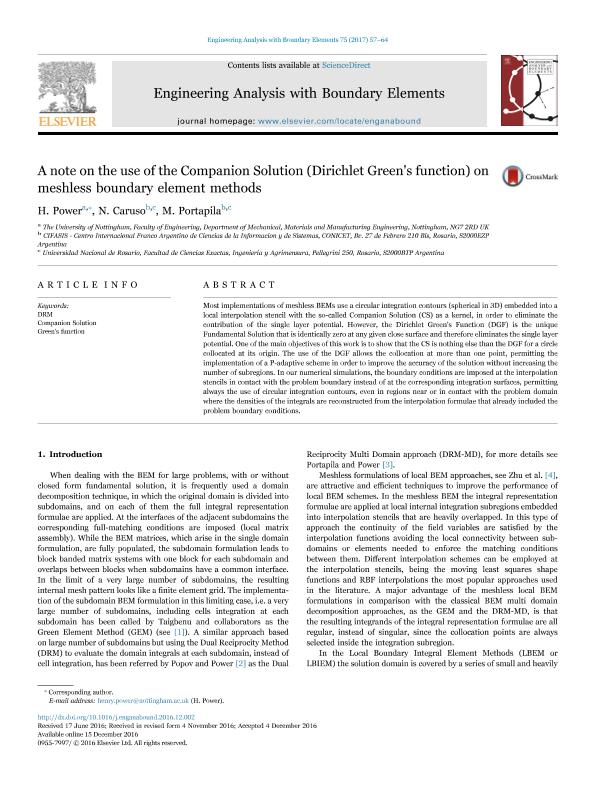Artículo
A note on the use of the Companion Solution (Dirichlet Green's function) on meshless boundary element methods
Fecha de publicación:
02/2017
Editorial:
Elsevier
Revista:
Engineering Analysis With Boundary Elements
ISSN:
0955-7997
Idioma:
Inglés
Tipo de recurso:
Artículo publicado
Clasificación temática:
Resumen
Most implementations of meshless BEMs use a circular integration contours (spherical in 3D) embedded into a local interpolation stencil with the so-called Companion Solution (CS) as a kernel, in order to eliminate the contribution of the single layer potential. However, the Dirichlet Green's Function (DGF) is the unique Fundamental Solution that is identically zero at any given close surface and therefore eliminates the single layer potential. One of the main objectives of this work is to show that the CS is nothing else than the DGF for a circle collocated at its origin. The use of the DGF allows the collocation at more than one point, permitting the implementation of a P-adaptive scheme in order to improve the accuracy of the solution without increasing the number of subregions. In our numerical simulations, the boundary conditions are imposed at the interpolation stencils in contact with the problem boundary instead of at the corresponding integration surfaces, permitting always the use of circular integration contours, even in regions near or in contact with the problem domain where the densities of the integrals are reconstructed from the interpolation formulae that already included the problem boundary conditions.
Palabras clave:
Companion Solution
,
Drm
,
Green'S Function
Archivos asociados
Licencia
Identificadores
Colecciones
Articulos(CIFASIS)
Articulos de CENTRO INT.FRANCO ARG.D/CS D/L/INF.Y SISTEM.
Articulos de CENTRO INT.FRANCO ARG.D/CS D/L/INF.Y SISTEM.
Citación
Power, H.; Caruso, Nahuel Domingo; Portapila, Margarita Isabel; A note on the use of the Companion Solution (Dirichlet Green's function) on meshless boundary element methods; Elsevier; Engineering Analysis With Boundary Elements; 75; 2-2017; 57-64
Compartir
Altmétricas




